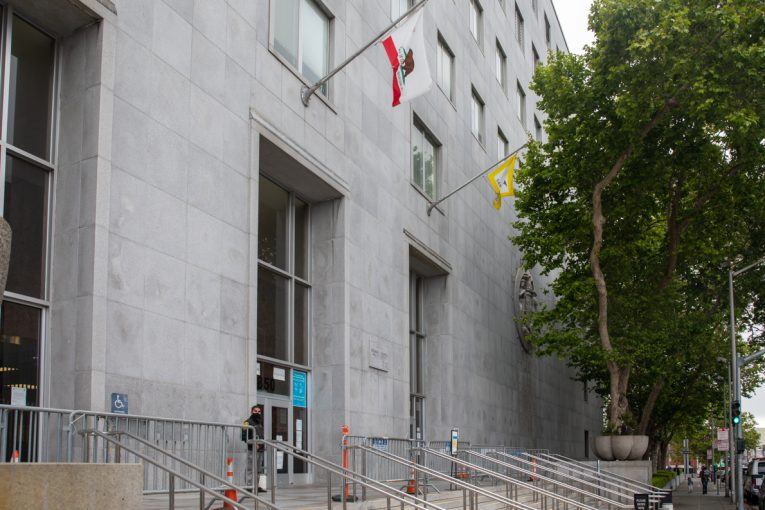
San Francisco, CA – Judge Michael Rhoads on Wednesday ruled that DNA evidence was sufficient for the purposes of the low standard of proof for a holding order in a preliminary hearing, despite a vigorous challenge by Public Defender Chris Fox-Lent.
The event took place in July 2021 in a parking garage of a residential apartment building. The property manager spotted a Blue Honda Pilot enter the lot behind a resident and described two white men, ages 18 to 25, begin to case vehicles.
They broke into three vehicles in all and stole a wetsuit and blanket from one of them.
At this point, they unsuccessfully attempted to exit the lot, but could not. They parked in a stall, jumped a fence, and one of the men left behind black Crocs – which turned out to be the critical evidence in the case.
A police officer obtained a DNA sample from the accused at the San Mateo County Jail where he was being held at the time, in 2021, on an unrelated charge.
Criminalist Kelly Fracchia from the San Francisco Criminal Lab testified as an expert on DNA evidence. She testified that one of the technicians had swabbed the black Crocs and she ran the DNA analysis into CODIS which searched DNA profiles from known offenders.
The DNA results produced a mixture which had four different contacts. On one shoe it produced a 79 percent from the accused and the other was 86 percent from the accused, with the rest being from three other unknown individuals.
She called this “very strong support for inclusion.”
However, under cross-examination from Fox-Lent, she acknowledged that the sample was tiny— “a couple dozen cells.”
Moreover, DNA can remain for quite some time.
She acknowledged further that she has no way of knowing if the majority DNA profile was the most recent placed, and noted that it was possible that someone could have worn the shoes—particularly with socks on—and not leave DNA AT ALL.
During arguments, Fox-Lent moved to exclude the testimony of Fracchia arguing it to be hearsay, but also that it suffered from chain of custody issues. He argued that she never examined the Crocs, never swabbed them, and that given the fact that they were talking about a dozen skin cells, each step was critical.
However, the judge ruled that, given the rules of the lab and allowance of allowing such testimony to come in under Prop 115, there was sufficient foundation to admit her testimony.
Deputy DA Abigail Adams argued that the accused should be held to answer on all counts. She saw it as a simple case—the vehicles were locked, the defendant had no permission to enter the vehicles, they broke in, some items were taken, and two Crocs were left at the scene.
She argued that there was very strong suspicion to support that the accused was wearing the Crocs.
Fox-Lent countered that this was “far short of probable cause.” He noted that the person in the video wore socks, he was not barefoot.
He pointed out that four people’s DNA was there and that Fracchia testified that she can’t say for sure who wore them last, who the owner is, and it’s only speculation that they belonged to the accused.
Moreover, there was no other evidence. Nothing was found in the accused’s possession. Nothing tied him to the Honda.
Moreover, the property manager identified two white people and noted that his client was not in the age range given.
In short, “there is no corroborating evidence.”
Adams responded that corroboration isn’t necessary. She pointed out that the identification of race was dispositive since the men were wearing masks and it was difficult to see.
Judge Rhoads then watched a key portion of the video and acknowledged that the video was not particularly helpful.
He determined that for the lower standard of a preliminary hearing, there was at most weak corroboration and stated he believed that could be problematic at trial.
However, he noted that the DNA was sufficient by itself for the purposes of a preliminary hearing to gain a holding order despite all of the issues raised by Fox-Lent.
Fox-Lent then moved to reduce the charges to misdemeanors under PC § 17(b) and to release his client, who had just been paroled on his previous charge pending trial in this case and another one in Alameda.
The judge, citing the facts of this case and his criminal history, declined to reduce the charges. Both the DA and judge were willing to consider release, but wanted figure out the pending charges in Alameda before doing so.

